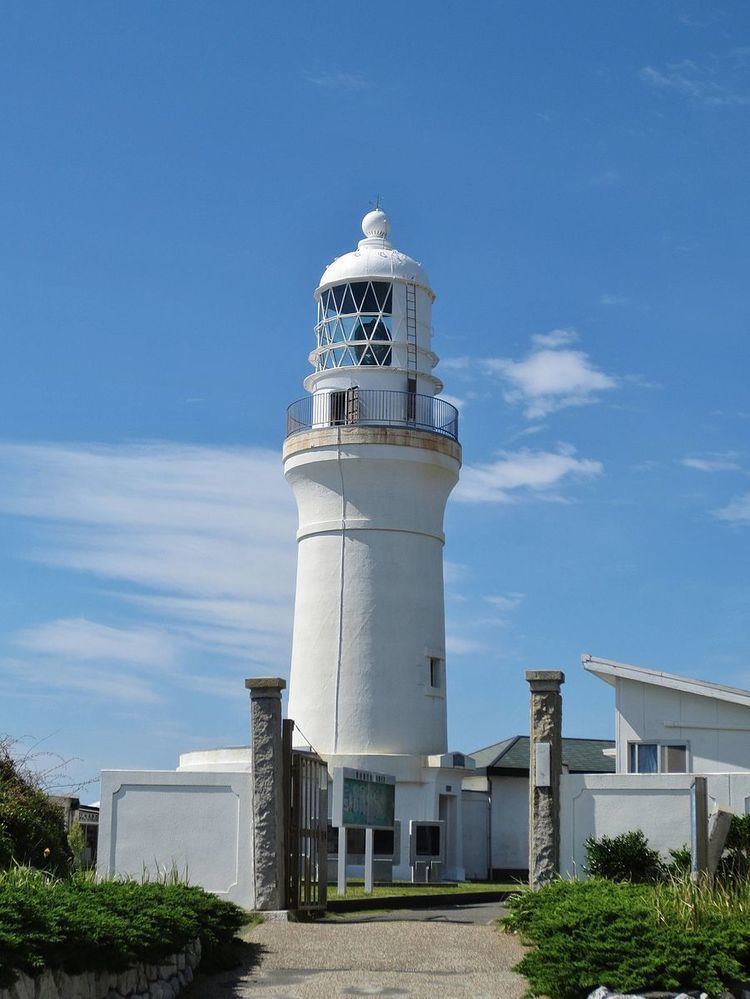Year first lit 1874, 1946 Construction brick tower Opened 1 May 1874 | Foundation brick and concrete Height 22 m Phone +81 548-63-6821 | |
 | ||
Location Omaezaki
Shizuoka Prefecture
Japan Tower shape tapered cylindrical tower with balcony and lantern Markings / pattern white tower and lantern Address 1581 Omaezaki, Shizuoka Prefecture, Japan Hours Closed now Friday9AM–4PMSaturday9AM–4PMSunday9AM–4PMMonday9AM–4PMTuesday9AM–4PMWednesday9AM–4PMThursday9AM–4PMSuggest an edit Similar Mikomotoshima Lighthouse, Irōzaki Lighthouse, Anorisaki Lighthouse, Sugashima Lighthouse, Shionomisaki Lighthouse | ||
Omaezaki lighthouse
Omaezaki Lighthouse (御前埼灯台, Omaezaki tōdai) is a lighthouse located on a hill at the outermost extremity of Cape Omaezaki south of Omaezaki port, Shizuoka Prefecture, Japan.
Contents
A lighthouse was built at Cape Omaezaki as early as 1635, when the Tokugawa Shogunate recognized the frequency of marine accidents on the rocks off the coast of Tōtōmi Province.
Omaezaki lighthouse top 6 facts
History
The Omaezaki Lighthouse was one of the 26 lighthouses to be built in Meiji period Japan by British engineer Richard Henry Brunton. Although not one of the eight lighthouses stipulated specifically by the provisions of the Anglo-Japanese Treaty of Amity and Commerce of 1858, construction was given priority by the Meiji government after a Japanese navy vessel grounded on the rocks off Cape Omaezaki on April 8, 1871. Construction began on May 26, 1872 and the lighthouse was completed on May 1, 1874 at a cost of 25,000 yen. The lighthouse is noteworthy as the first to use a Fresnel lens in Japan.
The light was upgraded to a more powerful beam in 1917. During World War II, Omaezaki Lighthouse was bombarded by United States Navy warships, cracking its lens and causing severe damage to its structure. The light was repaired after the end of the war, and its lens upgraded to a third order Fresnel. It went back into operation on March 24, 1949.
The Omaezaki Lighthouse is currently open to the public, and can be ascended for a panoramic view of the Pacific Ocean. It is registered with the Japanese government as an “A-grade Lighthouse” for historic preservation and is listed as one of the “50 Lighthouses of Japan” by the Japan Lighthouse Association.
